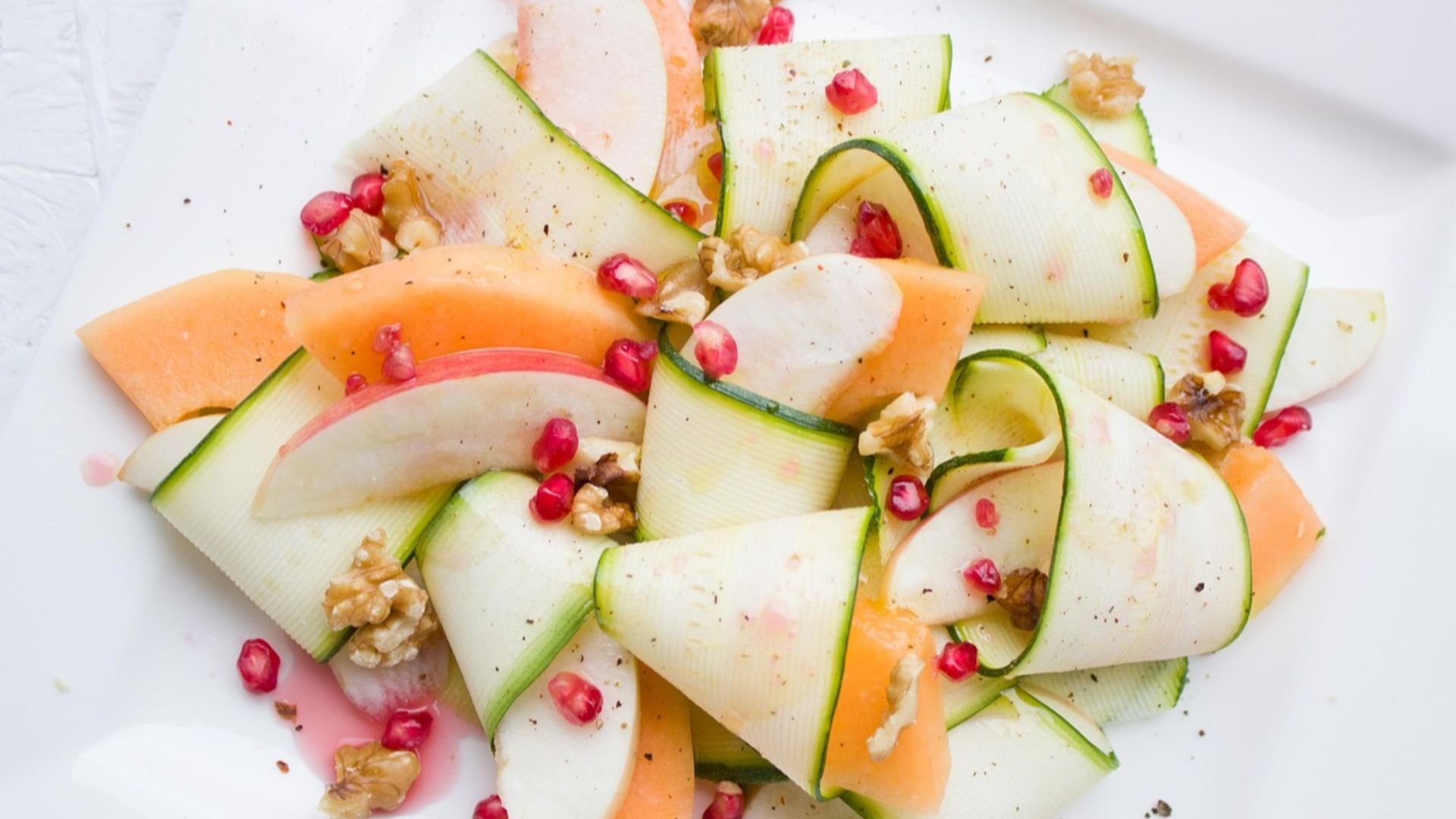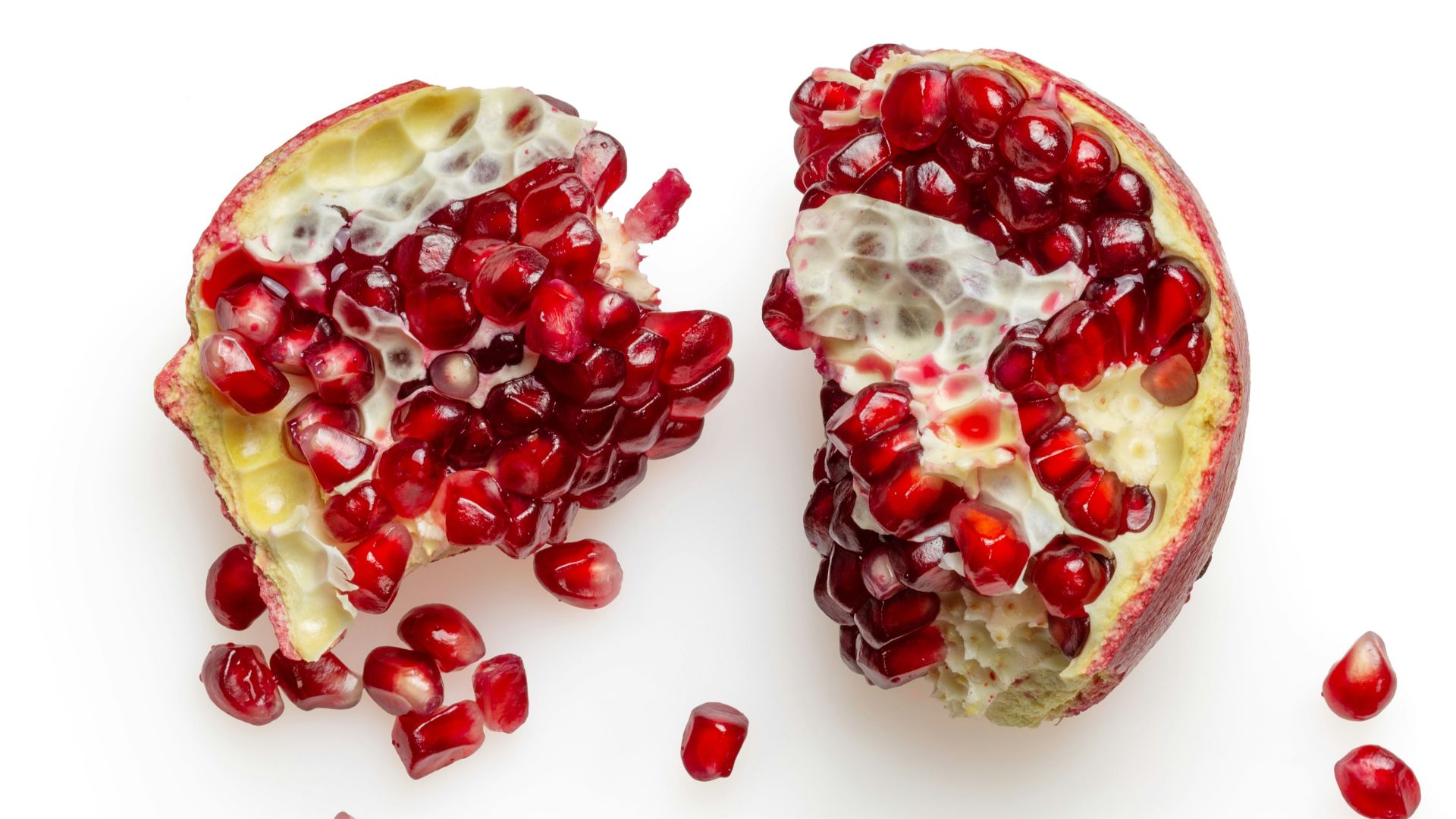Don't be intimidated by a pomegranate's thick skin and messy opening process. Not only is this gorgeous winter fruit one of the most delicious, it's also incredibly versatile. You can sprinkle the seeds (also called arils) over just about any dish from sweet to savory, or you can make your own pomegranate marinades to add a bright and slightly tangy flavor to any dish.
When selecting a pomegranate, bigger is always better as the larger the fruit means the more seeds will be inside. You don't just want to judge with your eyes; you'll want to hold the pomegranate for yourself to feel its weight. Looks matter too—you want a bright pomegranate with shiny skin.
Pomegranate Molasses
Pomegranate molasses is used throughout Middle Eastern cuisine. While you can make pomegranate molasses with store-bought juice, both the taste and the vibrant color will be improved by making it fresh. If you know how to make preserves, you can make pomegranate molasses.
This sweet and tangy syrup can be used similarly to citrus to add depth to any dish. The hint of sourness makes it an excellent topping for salads or yogurt bowls. You can also use pomegranate molasses as a marinade for meats, particularly lamb and beef.
Chiles En Nogada
Chiles en nogada is considered one of Mexico's national dishes, but it isn't one that many people know outside the country. Chiles en nogada comprises of roasted poblano chiles stuffed with minced meat, fruit, and spices. The dish is then topped with a delicious walnut cream sauce, parsley, and pomegranate seeds.
Chiles en nogada represents the colors of the Mexican flag—green chiles, white sauce, and red pomegranate! Reportedly, chiles en nogada was first served in 1821 after the country won its independence from Spain. While this is definitely the most labor-intensive dish on this list at upwards of 1.5 hours, we promise it's worth it.
Ash-e-Anar
Pomegranates are especially important in Persian cuisine, and this hearty soup showcases the best of the fruit's flavors. Ash-e-anar is a thick soup traditionally eaten on the winter solstice. It's warm and comforting to fill you up on cold winter nights.
Ash-e-anar uses both pomegranate molasses and seeds as topping. The sour pomegranates play beautiful with chunky beans and bright mint. Don't worry carnivores, this soup is traditionally served with meatballs, though they aren't the star of the show.
Pomegranate Zucchini Salad
 Einladung_zum_Essen on Pixabay
Einladung_zum_Essen on Pixabay
For something a little lighter that can be enjoyed in warmer months, pomegranate zucchini salad is a wonderful choice. This salad is both delicious and beautiful, making it enticing to kids who are resistant to rabbit food. Instead of leafy greens, this salad uses zucchini as its base.
Since zucchini isn't the most flavorful of vegetables, the pomegranate seeds get their chance to shine alongside the lighter flavors of walnuts and apples. For added fun, cut the zucchini into long, flat ribbons that can be slurped up. Don't forget to top with that precious pomegranate molasses!
Eat the Seeds
Of course, you don't need to do anything more with your pomegranate than slice it open and feast. The seeds are crunchy bombs of tartness and are almost addictive to eat. While pomegranate preparation can be messy, there's one easy trick to prevent your kitchen from looking like a crime scene.
First, cut off the crown at the top of the pomegranate; then, score the fruit into sections. To avoid making a mess, open these sections in a bowl of water, separating the white rind from the seeds. The seeds will sink to the bottom while the rind will float to the top.
KEEP ON READING

The Most Popular Chocolate Bars in the USA








